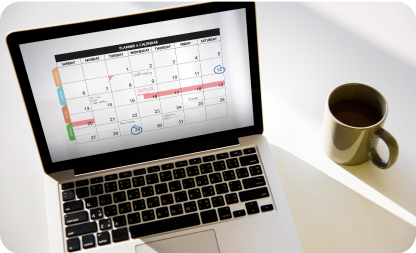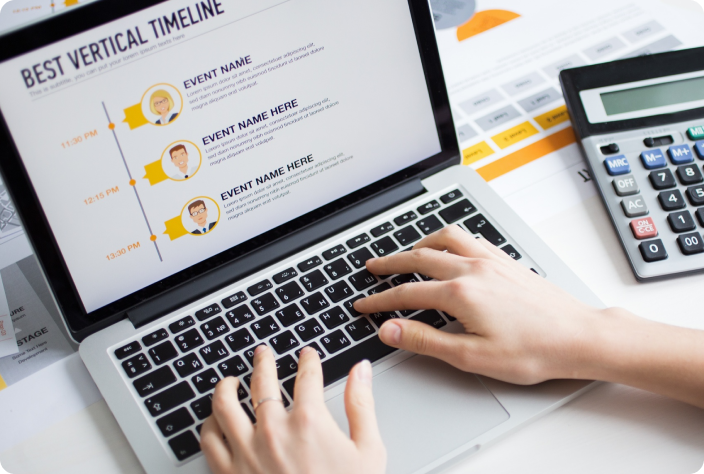Key Takeaways
- An event planning schedule is essential for managing complex logistics and multiple stakeholders.
- Digital tools can significantly enhance your scheduling efficiency and collaboration.
- Breaking down your schedule into phases helps maintain focus and prevents overwhelm.
- Regular communication and updates are crucial for keeping all parties aligned.
- Flexibility and contingency planning are key to handling unexpected changes smoothly.
Choosing the Right Scheduling Tools
Understanding Your Unique Requirements
Before diving into the sea of available options, take a moment to assess your specific needs. Consider the size and complexity of your typical events. Are you managing intimate gatherings or large-scale conferences? Identify your main pain points in current scheduling processes.
Are you struggling with vendor coordination, or is team communication your biggest challenge? Create a list of must-have features versus nice-to-have features. This self-reflection will guide you toward tools that truly address your pain points.
Exploring Different Types of Scheduling Tools
The market offers a variety of scheduling tools, each with its own strengths. Project management software like Asana or Trello provides versatility and excellent team collaboration features. While they may require some customization for event-specific needs, their flexibility can be a significant advantage.
Specialized event planning platforms such as Planning Pod or Eventbrite Organizer are tailored specifically for the events industry. These often include additional features like budgeting and guest management, making them comprehensive solutions. However, they may come with a higher price tag and a steeper learning curve.
For those seeking simplicity, collaborative calendars like Google Calendar or Microsoft Outlook offer user-friendly interfaces great for basic scheduling and team coordination. While they may lack some advanced features for complex event management, they’re often sufficient for smaller operations or as supplementary tools.
Key Features to Prioritize

Planning for Growth and Adaptability
As your event planning business evolves, so too will your scheduling needs. Choose a tool that can grow with your business, handling multiple events simultaneously if needed. For additional information on effective time management, you can explore scheduling for businesses to better understand how to optimize your operations. Look for options to add or remove features as your requirements change. This scalability ensures your chosen tool remains relevant and useful as your business expands.
Balancing User-Friendliness and Functionality
Considering Budget and ROI
While it’s tempting to opt for the cheapest option, consider the return on investment in terms of time saved and stress reduced. Compare pricing structures, whether they’re based on per user, per event, or a flat fee. Weigh the cost against potential improvements in efficiency and client satisfaction.
Sometimes, investing a bit more upfront can lead to significant gains in productivity and profitability down the line.

Prioritizing Security and Data Protection
In an age where data breaches can be catastrophic, ensure your chosen tool offers robust security measures. Check for compliance with data protection regulations like GDPR, especially if you work with international clients. Investigate the tool’s backup and data recovery options to protect against potential loss of crucial information.
Remember, the ideal scheduling tool should simplify your workflow, not complicate it. Take the time to research and test different options before making a decision. The right choice will become an indispensable asset in your event planning toolkit, allowing you to focus on what really matters – creating memorable experiences for your clients.
Unlock Productivity
Begin Your Free Trial Now!

Building Your Master Event Planning Timeline

Starting with the End in Mind
Breaking Down the Planning Process
To make your timeline more manageable, break the event planning process into distinct phases. Typically, these include pre-planning, planning, execution, and post-event phases. The pre-planning phase might involve initial client meetings, budget discussions, and concept development.
The planning phase is where most of your tasks will fall, including vendor selection, logistics coordination, and detailed event design. The execution phase covers the immediate lead-up to the event, the event itself, and immediate tear-down. Finally, the post-event phase includes evaluation, follow-ups, and final billing.
Detailing Tasks and Subtasks

Assigning Ownership and Deadlines
Building in Buffer Time
Utilizing Your Scheduling Tools

Regular Reviews and Updates
Balancing Detail and Flexibility
While it’s important to be thorough, be careful not to over-plan. Your timeline should provide clear direction without being so rigid that it can’t accommodate changes. Leave room for creativity and problem-solving as your event takes shape.
Creating a master event timeline is both an art and a science. It requires a careful balance of foresight, detail-orientation, and flexibility. By following these steps and leveraging your scheduling tools, you’ll create a timeline that not only keeps your event on track but also provides peace of mind throughout the planning process.
Coordinating Vendors and Staff Effectively
What if you could eliminate the endless back-and-forth emails and phone calls with vendors and staff? A well-structured coordination plan makes this dream a reality. For those managing events in specialized sectors like healthcare, effective coordination becomes even more crucial. Consider incorporating healthcare staff scheduling solutions to streamline the process and ensure seamless operations.

1. Create a Centralized Contact List.
- Compile all vendor and staff contact information.
- Include names, roles, phone numbers, and email addresses.
- Store this information in an easily accessible digital format.
- Share the list with key team members.
2. Establish Clear Communication Channels.
- Choose primary communication methods (e.g., email, project management tool).
- Set up group chats or channels for quick updates.
- Determine frequency of check-ins (daily, weekly, etc.).
- Create a communication hierarchy for urgent matters.
3. Implement a Task Management System.
- Assign specific tasks to each vendor and staff member.
- Set clear deadlines for each task.
- Use your scheduling tool to track task progress.
- Send automated reminders for upcoming deadlines.
4. Conduct Regular Coordination Meetings.
- Schedule recurring vendor coordination meetings.
- Hold separate internal team meetings.
- Create and distribute agendas before each meeting.
- Follow up with meeting minutes and action items.
5. Develop Detailed Timelines for Each Vendor.
- Create individual timelines for each vendor’s responsibilities.
- Include key milestones and deadlines.
- Ensure these align with your master event timeline.
- Share these timelines with respective vendors.
6. Establish a Change Management Process.
- Create a system for submitting and approving changes.
- Define who has authority to approve changes.
- Implement a method to communicate approved changes to all affected parties.
- Update all relevant documents and timelines accordingly.
7. Conduct On-Site Briefings.
- Schedule on-site orientations for all vendors and staff.
- Review event layout, timelines, and expectations.
- Distribute event-day contact lists and schedules.
- Address any last-minute questions or concerns.
8. Implement a Vendor and Staff Check-In System.
- Create a check-in process for event day.
- Assign a team member to manage check-ins.
- Prepare a system to track arrivals and departures.
- Have a plan for dealing with no-shows or late arrivals.
9. Provide Clear, Written Instructions.
- Develop detailed briefing documents for each vendor and staff member.
- Include specific responsibilities, timelines, and locations.
- Distribute these documents well in advance of the event.
- Request confirmation of receipt and understanding.
10. Foster a Team Atmosphere.
- Encourage open communication among all parties.
- Recognize and appreciate good work.
- Address conflicts or issues promptly and professionally.
- Create opportunities for team building when possible.

Effortless Time Management
Get Started with a Free Trial!
Adapting to Changes and Unexpected Challenges

In the dynamic world of event planning, the ability to pivot gracefully in the face of unexpected challenges is what separates good planners from great ones. Master these strategies, and you’ll navigate any storm with confidence and poise.
No matter how meticulously you plan, unexpected changes and challenges are an inevitable part of event management. The key to success lies not in avoiding these hurdles, but in developing the agility to overcome them. Let’s explore strategies to help you adapt swiftly and effectively when the unexpected occurs.
Build Flexibility into Your Plans.
- Create buffer time in your schedules to accommodate unexpected delays.
- Have contingency funds set aside for unforeseen expenses.
- Develop backup plans for critical elements (e.g., alternative venues, vendors).
Cultivate a Problem-Solving Mindset.
- Encourage your team to view obstacles as opportunities for creative problem-solving.
- Foster an environment where team members feel comfortable suggesting innovative solutions.
- Practice scenario planning to prepare for potential issues before they arise.
Establish a Rapid Response Protocol.
- Designate a core decision-making team for crisis management.
- Develop a communication flowchart for escalating problems.
- Create templates for communicating changes to stakeholders.
Leverage Your Network.
- Keep a list of backup vendors for various services.
- Cultivate relationships with venue managers and local suppliers.
- Join industry associations and attend networking events regularly.
Maintain Open Lines of Communication.
- Provide regular updates to clients, team members, and vendors.
- Be transparent about challenges and the steps being taken to address them.
- Use multiple communication channels to ensure your message reaches everyone.
Clear, honest communication helps maintain trust and cooperation during difficult situations.
Stay Calm and Prioritize.
- Take a moment to assess the situation objectively.
- Prioritize issues based on their impact on the event’s core objectives.
- Focus on solving one problem at a time to avoid feeling overwhelmed.
Learn from Each Challenge.
- Conduct thorough post-event debriefs to analyze how challenges were handled.
- Document lessons learned and incorporate them into future planning.
- Share insights with your team to improve overall preparedness.
Embrace Technology for Adaptability.
- Use cloud-based planning tools for easy updates and access to information.
- Implement event apps that allow for real-time communication with attendees.
- Explore virtual or hybrid event options as contingencies for in-person events.
By incorporating these strategies into your event planning approach, you’ll be well-prepared to handle whatever challenges come your way. Remember, it’s not about creating a perfect plan, but about being perfectly prepared to adapt.
With these adaptive strategies in your toolkit, you’re ready to face any event planning challenge head-on. But how do you bring all these elements together to create truly exceptional events? In our conclusion, we’ll explore how mastering the art of the event planning schedule can elevate your entire planning game.
Elevating Your Event Planning Game
Armed with the right tools, strategies, and mindset, you’re now ready to transform from an event planner to an event maestro. Let’s bring it all together and see how mastering the event planning schedule can catapult your career to new heights.
As we’ve journeyed through the intricacies of event planning schedules, we’ve uncovered the power of organization, communication, and adaptability. These elements, when combined, form the bedrock of exceptional event management. Let’s recap the key takeaways that will elevate your event planning game:

Embrace the Right Tools.
Craft a Comprehensive Master Timeline.
Coordinate with Precision.
Communicate Strategically.
Adapt with Grace.
As you apply these strategies to your next event, you’ll find yourself navigating the complexities of event planning with increased confidence and capability. You’ll move from merely managing timelines to orchestrating unforgettable experiences that leave lasting impressions on clients and attendees alike.
So, take these tools, strategies, and insights, and go forth to create extraordinary events. Your elevated event planning game awaits – it’s time to shine!







